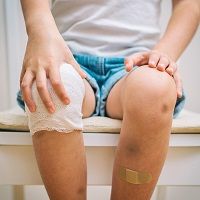Despite 100 Years of Research, Wound Care is Still an Itch in Need of a Scratch
A recent review in Chronic Wound Care Management and Research suggests that wound pruritus is not well understood and is often poorly treated, despite nearly a century of clinical investigation. Irritations of the skin can be as distressing for patients as pain, the authors noted; yet, there is no established treatment protocol for wound pruritus.

A recent review in Chronic Wound Care Management and Research suggests that wound pruritus is not well understood and is often poorly treated, despite nearly a century of clinical investigation. Irritations of the skin can be as distressing for patients as pain, the authors noted; yet, there is no established treatment protocol for wound pruritus.
“Rapid progress is being made in understanding the mechanisms underly­ing the itch sensation, but more needs to be learned about the physiology of itch before more appropriate treatments can be developed,” the authors explained.
“Pruritus” is generally considered a sensation of the skin, but the researchers pointed out that wound pruritus is related to wounds, which are often through the skin and deeper than the skin. It can be characterized as the irritating sensation or disturbing feeling related to an open wound, including the wound bed and the skin immediately surrounding the open wound.
In particular, they looked at how the brain processes itch, including research indicating that scratching may mediate inhibition of itch by deactivating the anterior cingulate cortex and posterior cingulate cortex, providing relief by suppress­ing the emotional components of itch. Another study found that scratching provides relief of itch by reduction in the discharge rate of spinothalactic track neurons, which are responding to an itch-producing stimulus.
“Scratching causes an inflammatory response, so nerve fibers are further stimulated to cause continued itching and scratching,” the review authors noted. “While scratching and rubbing can provide relief, both can also cause scratch marks and further injury.”
The review also looked at the roles of histamine, serotonin, interleukins, nerve growth factor, prostaglandins, and even stress, in the development and exacerbation of itch. Next, it summarized common treatment options, including cooling agents such as menthol, topical corticosteroids, anesthetics such as capsaicin, antihistamines, and cannabis. The effectiveness of each approach varies widely. Several studies have shown no impact of massage on wound pruritus, except for one small sample study published in 2010 in the Journal of Burn Care Research showed that massage therapy twice a week for 15 minutes reduced pain, itching, and anxiety levels associated with burn injuries in 32 adolescents with 11 to 20% body surface area burns, compared to controls.
Noting the still perplexing nature of would pruritus, the review authors suggested that a great deal of further research is warranted.
“As more is learned about the physiology of wound pruritus, more effective management strategies can be developed and employed,” they concluded.